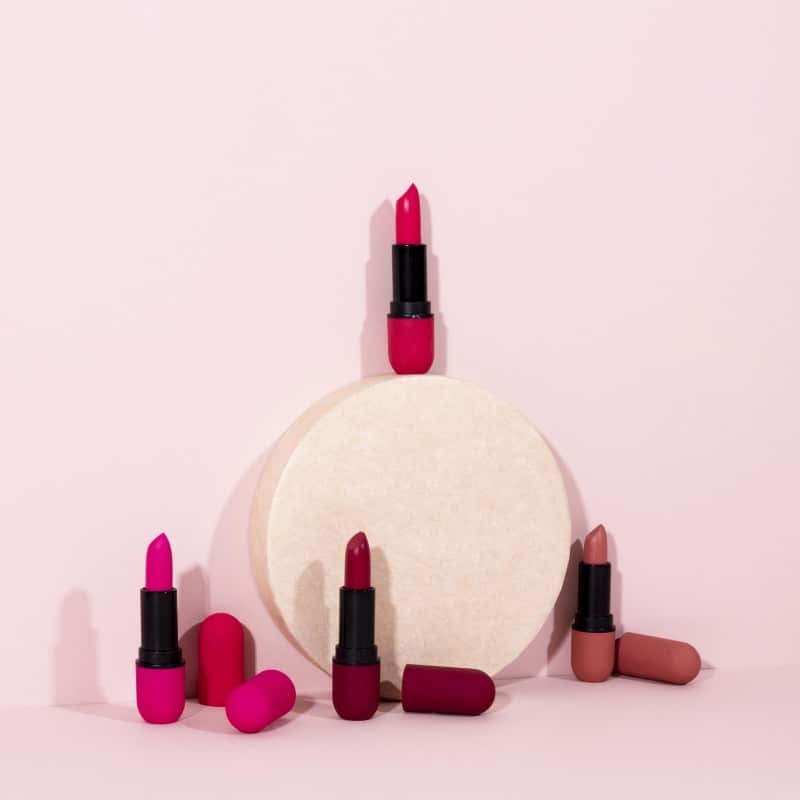
The significance of the lip gloss heavy metal test requirement for both regulatory compliance and consumer health is explained in this article, along with the reasons why lip products need special safety considerations and what a CPSR for lip products should contain.
Why Lip Products Require Special Safety Considerations
Since the majority of cosmetics are designed to remain on the skin’s surface, dermal absorption, irritation, and sensitization are typically the primary concerns in safety evaluations. Because some of the applied product is swallowed during regular daily use, lipsticks and lip glosses are not the same. According to studies, regular users may consume several milligrams of lipstick every day, for a total of several grams annually. Even though these quantities may not seem significant, they are important when considering pollutants such as heavy metals or allergenic pigments that can accumulate in the body over time. In order to ensure that the toxicological profile takes into account both local and systemic risks, ingestion exposure must be incorporated into every lipstick safety testing CPSR.
The lips’ physiology also makes them more susceptible. The lips are thinner and more permeable than other areas of the skin because they lack a fully developed stratum corneum. Additionally, they have a high degree of vascularization, which facilitates the easier entry of substances into the bloodstream. This implies a higher likelihood of systemic exposure to any contaminants present in lip products. As a result, a CPSR for lip products needs to be more thorough than one for other cosmetics, taking into account toxicological thresholds, ingredient purity, and oral ingestion.
Regulatory Framework for Lipsticks and Lip Glosses
Under EU law, lipsticks and glosses must be supported by a Product Information File (PIF) that contains a Cosmetic Product Safety Report. For lip products, the CPSR must address not only dermal exposure but also ingestion, calculating realistic exposure levels and comparing them against toxicological reference values. The assessor must review ingredient safety, evaluate potential impurities, and provide a reasoned conclusion on product safety. This includes reviewing Annex IV to confirm that every pigment used is authorized for lip application. The CPSR for lip products is therefore often more demanding than for skin creams or shampoos, because it requires dual exposure assessment and stricter control of colorants and impurities.
Additionally, questions often arise about whether each shade requires a separate CPSR. As highlighted in Certified Cosmetics’ article “Do I Need a Separate CPSR for Each Scent, Color, or Size?”, the answer depends on whether pigments introduce different impurity profiles. In some cases, shades can be grouped; in others, separate reports are necessary to ensure compliance.
Heavy Metals in Lipsticks and Lip Glosses
One of the biggest safety issues with lipsticks and glosses is still heavy metals. Iron oxides and mica are examples of pigments that can introduce trace amounts of lead, cadmium, arsenic, chromium, or nickel, which are forbidden by EU law unless they are present in safe and technically unavoidable amounts. These traces are only permitted under Article 17 of the EU Cosmetics Regulation if they are technically impossible to avoid and do not endanger human health.
Testing and Compliance Requirements
Businesses must conduct laboratory testing utilizing techniques like ICP-MS or ICP-OES, which can detect metals at parts per billion, in order to prove compliance. The quantification of impurity levels and their maintenance below acceptable limits is guaranteed by a valid lip gloss heavy metal test requirement. For instance, lead concentrations in lip products must stay well below the regulatory thresholds, which are frequently set at 10 ppm.
A lipstick safety testing CPSR must document the results of heavy metal analysis and include oral exposure modeling. During routine use, the computed margin of safety must verify that trace contaminants do not build up to dangerous levels. A CPSR would be insufficient and non-compliant without this information.
Vigilance is crucial because scientific surveys have revealed that some lipsticks on the market contain detectable levels of heavy metals. Reputable companies reduce this risk by regulating the quality of their raw materials, asking suppliers for certificates of analysis, and carrying out their own batch testing. A lip product’s compliant CPSR shows that all of these procedures are followed, protecting customers and guaranteeing regulatory approval.
Colorants, Pigments, and Labeling Issues
Lipsticks and glosses are distinguished by their color, but this characteristic also presents regulatory issues. Not all pigments are approved for use on the lips, and only those listed in Annex IV of the EU Cosmetics Regulation may be used. Certain pigments that are safe for external skin application cannot be used in products that pose a risk of ingestion. As a result, choosing and recording pigments is an essential component of the CPSR for lip products.
Another area that needs careful thought is labeling. The “may contain” (+/-) system is used by many brands to streamline packaging for wide product ranges. Despite being permitted by law, this practice needs to be supported by a safety evaluation. The CPSR for lipstick safety testing must demonstrate that potential cross-contamination between shades does not present any new hazards. In the end, accurate and transparent labeling guarantees consumer protection.
Safety Testing Workflow for Lip Products
There is a methodical process for creating a CPSR for lip products:
- Ingredient Review: Gathering information from suppliers about impurities, purity, and analysis certificates.
- Laboratory Testing: Using sophisticated analytical techniques, stability tests, microbiological tests, and the lip gloss heavy metal test requirement are carried out.
- Exposure Assessment: Determining oral and dermal exposure levels based on actual consumer use.
- CPSR Drafting: Putting together Part A (exposure and toxicological data) and Part B (safety assessor’s conclusion).
- Post-Market Monitoring: Monitoring customer comments and unfavorable incidents to revise the safety evaluation as needed.
A strong lipstick safety testing CPSR must combine all of these steps, ensuring that both regulators and consumers can trust the product.
Challenges and Trends in Lip Product Safety
In terms of safety testing, lipsticks and glosses also face more general difficulties. Assessors must balance manufacturing realities with consumer safety when dealing with the idea of “technically unavoidable traces.” Because there may not be enough toxicological data for new materials, innovations in nanopigments and novel colorants bring both innovation and regulatory uncertainty.
In the meantime, consumers are now more aware of safe formulations and heavy metals. Clear labeling, the appropriate use of “may contain,” and thorough CPSRs are examples of transparent communication that help brands meet regulatory requirements while fostering consumer trust.
Frequently Asked Questions
Q1. Why is it that lip products require more testing than lotions or creams?
Because they are both applied to the skin and consumed. Both oral and dermal exposure must be assessed in a CPSR for lip products.
Q2. Which heavy metals in lip products are the most problematic?
The main issues are lead, cadmium, arsenic, chromium, and nickel. They stay below safe levels if the lip gloss heavy metal test requirement is met.
Q3. Is it possible for different lipstick shades to share a single CPSR?
Occasionally, but only in the event that the impurity profiles match. Separate CPSRs are safer if the contamination risks of the pigments vary.
Q4. What impact does “may contain” labeling have on the CPSR?
It needs to be explained. The CPSR for lipstick safety testing must demonstrate that any risks of cross-contamination are tolerable.
Q5. How frequently should tests for heavy metals be conducted?
Whenever formulations or suppliers change, at the very least. To consistently satisfy the lip gloss heavy metal test requirement, numerous brands perform regular testing.
Conclusion
Due to their dual exposure pathway and pigment dependence, lipsticks and lip glosses are among the cosmetics that are most closely monitored. Every component, colorant, and impurity is assessed for both oral and dermal safety using a thorough lipstick safety testing CPSR. Heavy metal analysis, exposure calculations, and thorough toxicological evaluations must all be included in the CPSR for lip products. The lip gloss heavy metal test requirement, which ensures that products stay within safe thresholds, is at the center of this procedure.
Brands can maintain compliance with EU Regulation 1223/2009 and strengthen consumer trust by transparently addressing issues such as pigment restrictions, oral exposure, heavy metal contamination, and labeling practices. In addition to meeting regulatory requirements, safe, legal, and thoroughly researched lip products safeguard public health and brand reputation in a cutthroat international marketplace.
At Certified Cosmetics, we specialize in preparing CPSRs for lip products and guiding brands through every step of the compliance process. From heavy metal testing to PIF documentation, our experts ensure your lipsticks and glosses meet all EU requirements. Learn more about our CPSR services here.

